How Therapists Play with Toys
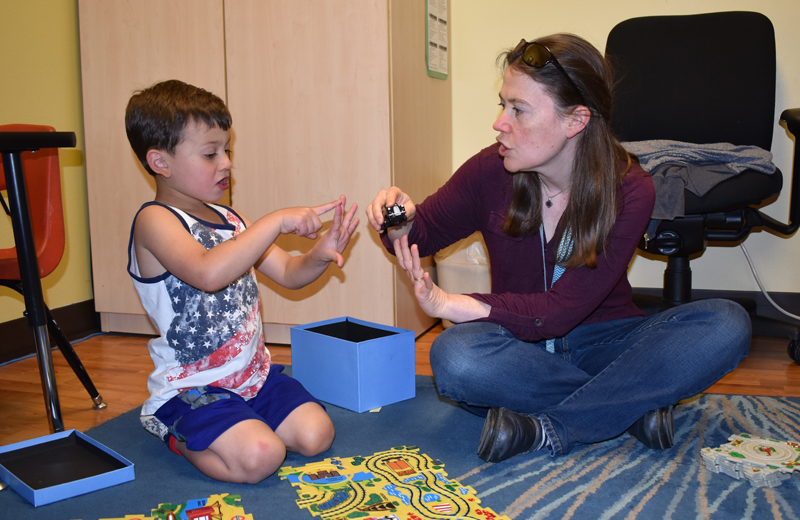
“I never thought to play that way!”
This is a refrain that pediatric therapists hear frequently. As therapists, we have years of training in science, theory, and practical application of therapy approaches. As pediatric therapists, we have the unique task of figuring out how to use these therapy approaches in a manner that is engaging and developmentally-appropriate for children. Our job is to teach your child developmentally functional skills but do so in a fun, playful way. We spend our days on the floor, playing with a variety of toys and using toys in different ways to meet the individual needs of the children we work with. We know that the sky is the limit for creativity and that there are countless ways to play!
Below you’ll find some common toys and how different therapists at Encompass like to play with them. Maybe you’ll be inspired to try a new way of playing, or target a new skill! How do you like to play?
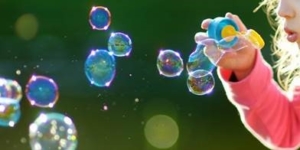
Bubbles
“I like to work on turn-taking. I can blow bubbles first, and then you can do it next. We can also work on a child giving directions (telling me what to do, such as ‘blow up in the air’ or ‘blow over there’). I also like to use bubbles as a motivator.” – Genealle, Speech-Language Pathologist (SLP)
“Bubbles are great for isolating an index finger to pop, as well as hand eye coordination to follow a slow-moving bubble to pop. This is often easier and more motivating than a ball, but it will develop the skills needed to catch a ball.” – Kavita, Occupational Therapist (OT)
“Bubbles are good for oral motor skill building (blowing, lip rounding), impulse control (waiting to pop), motor planning (moving to pop the bubbles), body awareness (what part of your body did the bubble land on), and bilateral or unilateral coordination.” – Jenna, Certified Occupational Therapy Assistant (COTA)
“I use bubbles to target words with early developing sounds such as ‘pop,’ ‘up,’ and ‘whoa.’ Bubbles can sometimes be messy, so you can play with them in the bathtub.” – Kim, SLP
“Use bubbles to target early requesting words such as ‘please,’ ‘more,’ or ‘want.'” – Lindsey, SLP

Farm Set
“This is great for using CORE words with AAC (alternative and augmentative communication) users. I also like to model ‘on’ and ‘off,’ ‘go’ and ‘stop,’ ‘in’ and ‘out,’ ‘mine,’ ‘help,’ etc.” – Kristin, SLP
“Use the small pieces as part of an obstacle course, allowing time to play with the barn once all pieces are collected. The barn serves as a functional and motivating reward.” – Jenna, COTA
“If the child is interested and motivated by this toy, I can use it as a tie-in to other areas I want to address, e.g., draw a square as a ‘barn’ to place animals in, cut paper into pieces (snipping or cutting on a line) to make food for animals, roll play dough into balls for animals to jump on ‘hay stacks,’ and hide animals around the room to work on gross motor skills to find the animals.” – Kavita, OT
“Who could not love this? I like to target animal sounds, action and grammar (‘milking the cow’), integrating play, and turn-taking.” – Genealle, SLP
“Take out the batteries for this toy and have fun making your own sounds!” – Kim, SLP
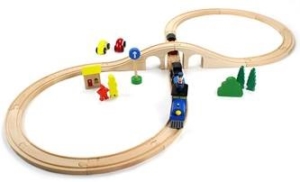
Train Set
“I target spatial concepts. Hide the pieces around your room and have the kiddo listen as you tell them where to find them. For example, you might say, ‘There is a piece behind the chair.'” – Grace, SLP
“You can copy designs and orient the curves which helps prepare kids for writing.” – Kavita, OT
“Use trains to target fine motor skills by snapping the pieces together and moving the trains with your fingers. You can work on four-point or army crawling while driving the trains around the track.” – Jenna, COTA
“Move the trains using lots of action sounds, like ‘chug chug,’ ‘beep,’ ‘ding ding,’ and ‘crash!’ You can also work on problem-solving how to put pieces together by pausing and waiting for your child to try multiple options.” – Mel, Educator
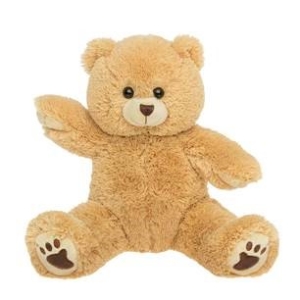
Stuffed Animals
“Use descriptive words to describe the toy, like ‘soft’ and ‘fuzzy.’ You can talk about body parts (nose, eyes, hands) and action words (‘tickle his toes!’). Use the animals to talk about daily routines, like putting the animal to bed, waking her up, feeding her food, etc.” – Genealle, SLP
“Stuffed animals provide great deep pressure (proprioceptive input) if you hug them, get squished by them, or cuddle under a big pile of stuffed animals.” – Kavita, OT
“Practice donning/doffing (putting on/taking off) clothing by dressing and undressing the stuffed animals. You can use dress-up clothes with a variety of fasteners. This is a great way to practice skills needed for hygiene and bathing.” – Jenna, COTA
“Have the animals do the talking. Sometimes children feel more comfortable trying new sounds/words when they are either talking to a toy or making a toy do the talking. You might practice the /s/ sound by having your animals say ‘see.’ You could even practice identifying the erred way of saying the sound by correcting your animal if the animal says the sound the old way. ‘Oh no! I heard you say “tee.” Let’s use our long air for “ssseeee.”‘” – Lindsey, SLP
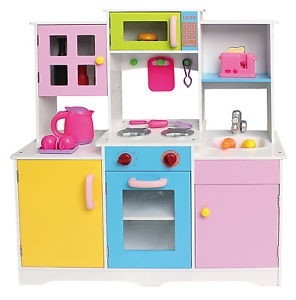
Play Kitchen
“Be silly! Use substitute items, or items that have nothing to do with a kitchen. Make a car sandwich!” – Kim, SLP
“Kitchens are prefect for pretend play. Your child can imitate you while preparing a meal. You can talk about what you are doing and watch your child play along.” – Becky, SLP
“This is a great toy for practicing play-based daily routines, such as putting food away and cleaning up, and the language that goes along with those routines (‘stir,’ ‘try it’). You can practice describing words (‘the pot is hot‘), spatial words (‘put it in the pot’), and make comments (‘yummy’ or ‘gross’).” – Genealle, SLP
“Practice functional use of utensils and steps/directions to make some simple meals. This is also a great way to practice opening containers, which targets fine motor skills and motor planning.” – Jenna, COTA
“With babies who are learning to stand, a play kitchen is a great place to practice pulling to stand. Placing the foods on the floor provides extra opportunities to squat or sit back down and stand up again and again.” – Kavita, OT
“Kitchens are great for multi-step directions.” – Kristin, SLP














